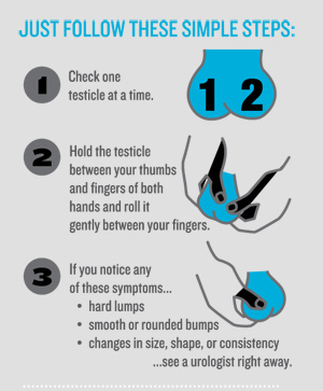|
How To: Self-Testicular ExamSelf-exams are tests that a man can do in order to find early signs of testicular cancer. This test should be done often in order to find cancerous tumors before they become serious. The best time to do a self-exam is during bath/shower time so that the skin of the scrotum is relaxed. Men between the ages of 15 and 35 are recommended to do this test at least one a month.
http://www.cancer.org/cancer/testicularcancer/moreinformation/doihavetesticularcancer/do-i-have-testicular-cancer-self-exam |
Other Wellness Tests to Make Sure You Are Okay (For all ages and genders):
- Regular Check-up: Your doctor may check your weight, how tall you are, blood pressure, and possibly even ask about your diet. this is a routine test that will be done with each doctors visit from adolescence.
- Cholesterol Testing: This tests the amount of cholesterol a person has. this test should be taken from the age of 20 and older every five years.
- Dental Check-up: This is where a dentist will clean your teeth and look for cavities or any other problem you may have, such as gum disease. 2 visits per year is advised.
- STD Screening: This is when your doctor will test you to make sure that you do not have any life threatening STD's or STD's that must be recorded for public safety. You can begin this testing whenever you become sexually active.



